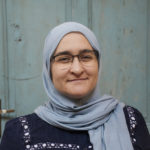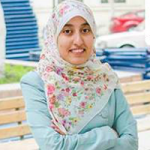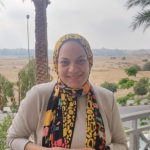

Athar Lina (www.atharlina.com) is a participatory conservation initiative that aims to establish modalities of citizen participation in heritage conservation based on an understanding of the monument as a resource not a burden. Athar Lina (The monument is ours) believes that only when cultural heritage is beneficial to the community, will the community become an active partner in its conservation. It sees the conservation decision-making process as an inclusive participatory process between stakeholders and believes that conservation can be a vehicle for development. Athar Lina is run by the Built Environment Collective|Megawra, a twin organisation including an NGO and an architecture firm (www.megawra.com)
Athar Lina started in June 2012 with a participatory design workshop focusing on the neighbourhood of al-Khalifa in Historic Cairo. This neighbourhood stretched from Ibn Tulun Mosque in the north to al-Sayyida Nafisa Shrine in the south and is known for its impressive, yet under-appreciated set of listed monuments dating from the 9th to the 19th century. The question asked was on the relationship between these heritage sites and their surroundings and whether they could become resources the community benefits from. The recommendations of this workshop focused on three mains issues; 1) identifying heritage nodes to conserve and rehabilitate for communal use; 2) children as prime targets for heritage awareness activities; 3)urban scale projects linking heritage to economic and social benefit through upgrade of public space, tourist promotion and capacity building. These recommendations guide the work we do to this day.
Conservation and rehabilitation work has focused on the monument node of Shajar al-Durr. The conservation of Shajar al-Durr Dome (1250) and rehabilitation of an adjacent early 20th century building into a community | cultural centre was implemented under the supervision of MoA. (November 2013 – January 2016; funded by the American Research Centre in Egypt and additional funding from the Barakat Trust - UK). This was followed by a second project to conserve the three remaining domes of the Shajar al-Durr zone, the popular 12th century shrines of al-Sayyida Ruqayya, Ja’fari and ‘Atika, all dedicated to descendants of the prophet.(November 2014 – November 2015; funded by the US State Department’s Ambassador’s Fund for Cultural Preservation).
The recommendation to target children through an educational heritage awareness campaign resulted in the Athar Lina School for Art and Heritage, in a primary governmental school in the street. (February – April 2013; funded through private donations). Starting April 2014, social and cultural activities moved to al-Khalifa Community Centre, a collaborative effort between Athar Lina, BEC-Megawra and a committee of al- Khalifa residents. Community services include a first-aid clinic with nominal fees and a daily summer school and after school program for neighbourhood children. Now in its third year, the mandate of Athar Lina’s Khalifa school is to teach heritage through art, crafts, Quran, reading, writing and sports. The school is funded through a profit-making sister program that organises tours to Historic Cairo for private schools and provides consultation services for heritage education. The third activity is Khalifa Exchange, a capacity building quid-pro-quo program in which local artisans and designers exchange skills and collaborate on new products inspired by the neighbourhood’s heritage and craft scene. In addition to the community services, this early 20th century building also hosts a cultural program curated by BEC-Megawra addressing issues of architecture and urbanism through city walks, film screenings, lectures and workshops.
A final aim, namely to promote tourism and raise awareness of the street’s history is achieved through mapping, street art and branding workshops that feed into an annual tourist promotion event, Spend your Day in Khalifa - with guided tours, exhibitions and performances such as Chirine el- Ansary’s Khalifa Inside Out telling the stories of the street. (November 2013 funded by the British Council; December 2014 funded by UNESCO Egypt; January 2016 crowdsourcing through Zoomal with additional funding by aic|finance).
The first phase of participatory research (June - November 2012; funded by the Danish Egyptian Dialogue Institute in partnership with the Ministry of Antiquities (MoA). included a series of participatory workshops, seminars, and exhibitions targeting representative stakeholders. It produced as output a concept paper for interventions in and around the street’s monuments to turn them into a community resource taking into consideration the conflicting claims and needs of different stakeholders. This output was presented to stakeholders and used as a basis for further later interventions. The next step was to work on the urban level. This started in April 2015 with an urban survey and research project to develop a parallel sustainable system of waste management in collaboration with Cairo University’s Faculty of Planning and Takween and in close consultation with MoA and Cairo Governorate. (partially based on research made possible with an individual research grant from IIE). Recommendations for intervention include the establishment of a citizen watchdog and lobbying group for improvement of waste management and infrastructure, piloting local waste separation and recycling experiments and further research on issues of rising subsurface water.
The first phase of urban interventions focused on street art, mapping and signage. It included maps and information for visitors at the neighbourhood gateways, signage indicating spots of interest and services and street art celebrating the neighbourhood's tangible and intangible heritage. This was in collaboration with local street artists. In many cases designs were developed through collaborative workshops.
In 2015, the first urban intervention based on the second phase of participatory research was launched in collaboration with Cairo Governorate. The purpose of the intervention is to transform local dumps into communal spaces. Work is currently underway on two plots to transform them into football pitches and a third location is being chosen for a children’s playground. (with funding from Cairo Governorate, ChipsyCo, PepsiCo and private donations)































